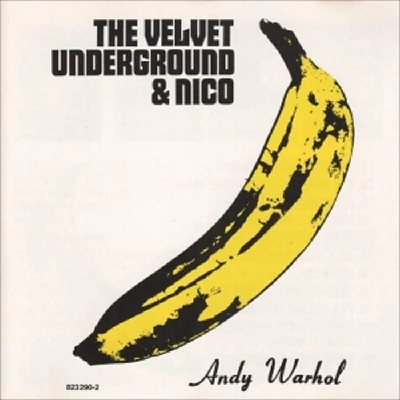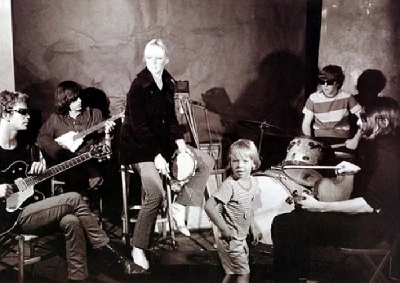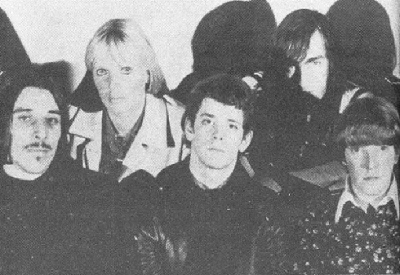Miscellaneous
-
The Velvet Underground and Nico
published: 5 /
11 /
2013

In our 'Re View' series, in which writers look back at albums from the past, we are revisiting after Lou Reed's death in October a column from last year from Dominic Simpson on the Velvet Underground's classic 1967 debut album with Nico
Article
Is there anything more than needs to be said about ‘The Velvet Underground & Nico’? Rivers of ink has been bestowed, and it has taken its place in the rock pantheon just as much as anything by Dylan or the like. It is one of those albums that’s become so integral that it’s easy to forget just how transgressive and downright confrontational it must have sounded when it first came out to an unsuspecting public, not to mention its banishment to obscurity for a long time, ignored and shunned by the mainstream.
Indeed it is difficult to be objective about an album that carries as much historical baggage and significance as this one. Much of the circumstances surrounding the album have passed into legend: Warhol spotting them live and agreeing to mentor them; his foisting of Teutonic chanteuse Nico on the band and her subsequent intra-band dalliances; her experiences of being bullied to tears by Lou Reed during recording sessions, with whom she had been romantically entwined; and that album cover.
And then, of course, there are the songs, which have taken on a mythology of their own. Listening to this remastered version, and despite the primitive technology at the time compared to today’s recording studios, the songs still pass the test of time, carrying as much undiminished weight as ever. For all the album’s legendary abrasiveness, the album’s bittersweet opener ‘Sunday Morning’, beginning with that ubiquitous celesta, is a reminder that the Velvets could produce pop songs if they wanted to. The choice of sequencing it right before the shockingly frank ‘I’m Waiting For the Man’, with its lyrics about scoring heroin – “He’s got the works/Gives you sweet taste” – was the band contrasting light and dark, and sending out a message to the listener: don’t expect a whole album of cute pop songs.
‘Femme Fatale’ combined the two, with a stylish musical backing sounding like something from a 1920s bohemian café in Paris more than any Mississippi-style blues concealing the darkness of the song’s subject: Nico’s whispery performance of Reed’s lyrics about the doomed Warhol-sponsored socialite Edie Sedgwick. Of course, the lyrics could just as easily be about Nico herself (ditto ‘There She Goes Again’), with lines like “she’s going to break your heart in two” prescient in light of her fated relationship with Reed. She would go on to ultimately set him up against bandmate John Cale by first sleeping with and then dumping both (she also turned down Leonard Cohen: “too Jewish”, apparently). The themes of identity would be further revisited with ‘I’ll Be Your Mirror’, in which Nico and Reed would explore their entangled personalities – “reflect what you are”, as the band sang.
It is ‘Venus in Furs’, though, that still sounds incredible, with it’s marriage of droning viola, Ostrich guitar (where each string was tuned to D), funeral procession-like percussion, and Reed’s shocking lyrical enactment of the sexual degradation in von Sacher-Masoch’s eponymous novel, “shiny boots of leather” and all. In the midst of a period that saw not only ‘Sgt. Pepper’ but also the Stones’ partially successful stab at flower power with ‘Their Satanic Majesties Request’, it must have sounded like something from Hades.
Yet sandwiched in-between the track and the album’s centre-piece ‘Heroin’, ‘Run Run Run’is a reminder that for all their experimental impulses – reflected in the screeching, wildly unconventional guitar solo, which approximated the Byrds’ ‘Eight Miles High’ – much of the Velvets songs remained rooted in the blues, anchored by riffs which could be traced to Bo Diddley.
That said, you could be forgiven for thinking that ‘All Tomorrow’s Parties’’ had little to do with American rock ‘n’ roll, recalling more the austere European-leaning work that Nico would tackle solo with ‘Desertshore’ and ‘The Marble Index’ (helped along by Cale). A dispassionately sung description of Warhol’s clique of hangers-on at the Factory, with Nico wondering “Where will she go and what shall she do/When midnight comes around”, it still sounds monumental, with Cale’s piano motif (based on tone clusters) and Mo Tucker’s regal beat sounding like something from the middle-ages.
Indeed, Cale’s presence is stamped all over the album; his previous work with La Monte Young and John Cage coloured the impetus for much of the album’s direction. The atonal middle-eight of ‘Heroin’ and aforementioned tracks such as ‘Venus in Furs’ and ‘All Tomorrow’s Parties’ simply couldn’t have existed in the same way without him. It is no coincidence that his departure after the similarly volatile ‘White Light/White Hea’t led to a somewhat gentler, folk-influenced sound on the remaining band’s third album, ‘The Velvet Underground’.
The striking contrast between those following two albums, with their extremes of noise and melody, reflects back on the first, which falls halfway between the two. Reed and Cale’s pulling of the band in opposite directions was no more apparent than here, which is precisely what make it so fascinating; ultimately, of course, it would be too much, with the latter being eventually ousted. The mixture of sweet pop melodies and noise would go on to influence much of modern-day music, with the presence of everyone from Sonic Youth, Yo La Tengo, Throbbing Gristle, Mazzy Star, and Spacemen 3 to the Jesus anf Mary Chain and most of Krautrock practically unthinkable without the guiding hand of the Velvets. The music contained herein is truly the beginning of alternative music – or that misnomer ‘indie’ – as we know it.
Track Listing:-
Picture Gallery:-

